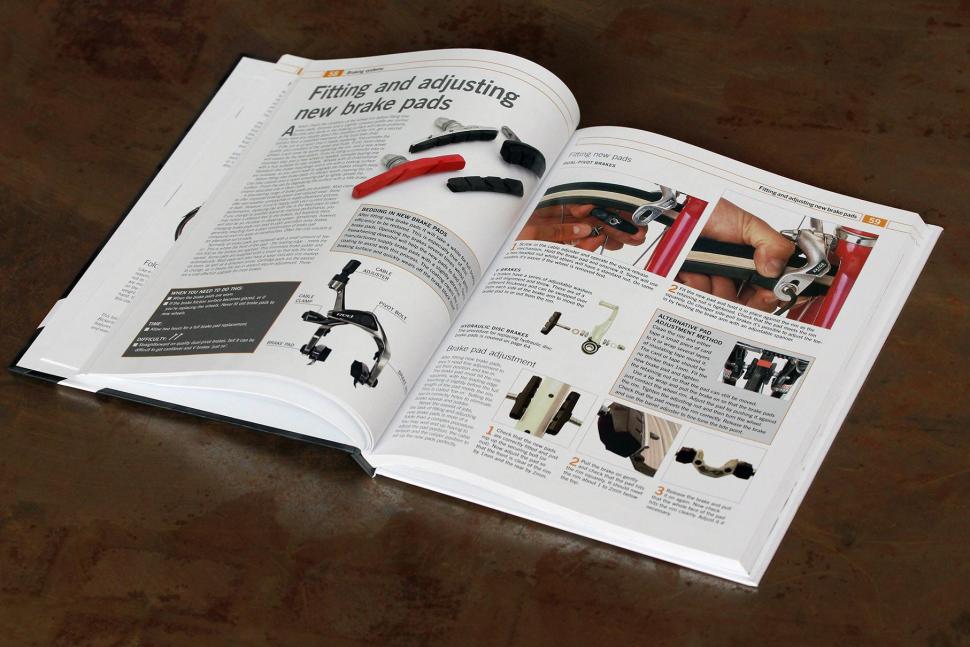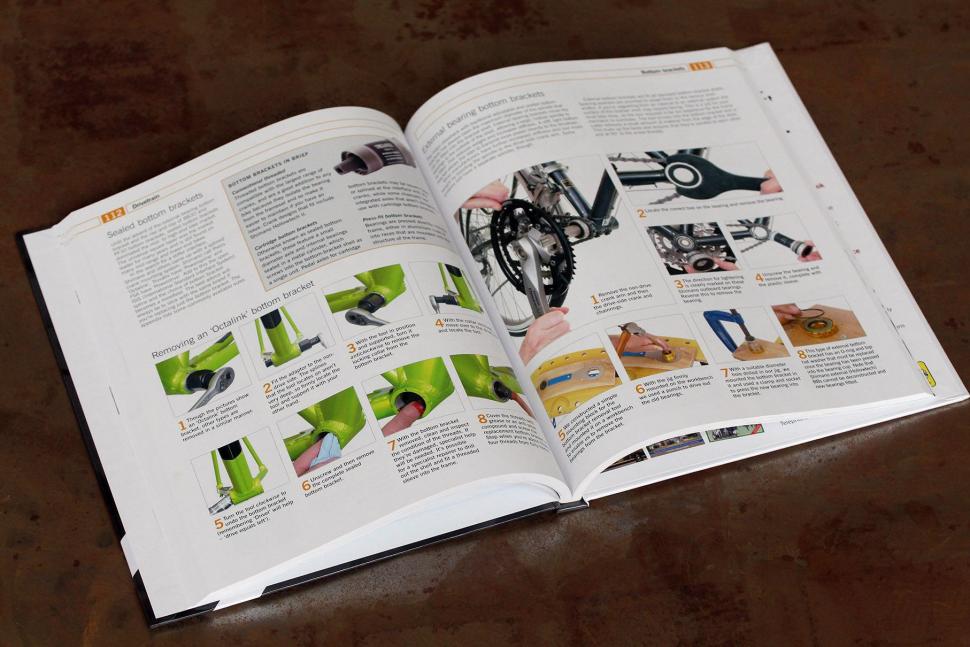Mention the name Haynes and most people will immediately think of workshop manuals. Haynes Publishing has offered a cycling maintenance guide since 1994, and with this latest edition ‘The Bike Book’ has surely had more updates than any other printed manual for cyclists. The aim of any update is to keep what is still relevant from previous editions, but to ensure that every new edition is ‘thoroughly revised to capture all new developments in the cycling world’. The result is generally clear and well-illustrated, albeit with some decisions or omissions that I found surprising.
The first edition of ‘The Bike Book’ was written by our very own grumpy Northerner John Stevenson, with the role of lead writer passing to Fred Milson for the next four editions. Mark Storey took over for the sixth, with James Witts joining Storey for this seventhth edition.
Buy The Bike Book(link is external)
One of the first decisions that any new custodian has to make is what material to carry over from the previous edition. I only have a couple of previous editions to hand, so I can’t do a full evaluation of what is no longer included, but let us take pedals as an example of how technology has changed since the first edition – and hence what has to be covered: in the beginning there was over a page about fitting toe-clips and toe-straps, with no mention of clipless pedals; today there are a couple of pages on fitting cleats for various clipless pedals, with clips and straps now receiving but a passing mention.
For most people that will be the right balance, but it is worth checking if the book covers any older technology that you want to know about – and perhaps keep hold of previous editions of the book in case you suddenly develop a taste for l’Eroica-compatible machines.
Ironically some of the original pictures of clips and straps are still being used to illustrate the section on removing and fitting pedals – and in fact many of the images have been carried over from previous editions. The photos are as clear and uncluttered as any you will find, and are supplemented by the occasional line drawing.
Obviously the various authors will have different views as to how much the existing material needs to be modified or removed: my view would be that if you are trying to live up to the claim of covering ‘complete bicycle maintenance’ then a certain amount of older equipment still needs to be included, but not at the expense of newer technology.
Over the years the page-and-a-half on puncture repair has shrunk to half a page, but somewhere along the way the instruction to roughen the tube with sandpaper before applying the glue has been lost, which is likely to result in an unsatisfactory repair.
An intermediate-level mechanic should know that anyway, and there may be instructions with the repair kit, but I found it a strange omission for the sake of saving the space of one picture. In my view if something is included it should be given proper coverage if it is to be of any use.
Here’s another strange choice: right from the start Haynes advocated starting the taping of handlebars at the centre, by the stem. It will work, and may even make the job slightly easier – but you are likely to ruffle the edges of your new tape after just a few rides, which will shorten the life of your tape. Whilst it was the method suggested by the late (and influential) Richard Ballantine, current thinking is to start taping at the open end of the handlebar, which better suits the thicker tapes in use today.
While I am at it, there are a few instances of small errors appearing: nothing critical, but disappointing. For example, beside the description of a cable puller (commonly known as a 4th hand), there is a picture of a ‘brake arm squeezer’ (or a 3rd hand).
Another example: linear-pull brakes are described as being ‘originally developed by Shimano’. Whilst they came up with the V-brake name, and certainly popularised the concept, several niche American brands offered such brakes before Shimano.
An important task for the author is to decide what new technologies to include: that is what keeps the book up-to-date, and is what the marketing team will be promoting. In this edition tubeless tyres, thru-axles, and internal cable-routing make their first appearance (among many other things), along with lots of new headset and bottom bracket ‘standards’.
It is probably an impossible (and unnecessary) task to cover every variation available on some components; taking bottom brackets and chainsets as an example, ‘The Bike Book’ has broader coverage than most books, going from traditional ‘cup and axle’ bottom brackets for square-taper chainsets, through cartridge and external bottom brackets, to various press-fit designs, as well as the removal and fitting of the appropriate chainsets.
Each maintenance task is given a realistic rating for difficulty, from ‘six spanners’ for truing a wheel, falling to ‘four’ for bleeding hydraulic brakes or fitting a new gear cable (on a road bike), down to ‘one’ for measuring chain wear.
As is normal with such books there are brief chapters on recommended tools, accessories, and types of bike: they are full of good advice such as ‘unless you’re buying at the top of the range, avoid bikes with suspension components, as these are often crude and heavy.’ It is aimed at purchasers of children’s bikes, but would apply equally to adult bikes.
It is always hard to agree on which is the best printed workshop manual, because a lot depends on your own competence and specific equipment; of the books that we have reviewed recently I would still put Lennard Zinn at the top of the pile for advanced users, but for intermediate users ‘The Bike Book’ provides something slightly different to Dorling Kindersley’s offering. I prefer the clarity of DK’s CGI images, but appreciate the inclusion of some older technology by Haynes.
Some of Haynes’ automotive manuals have been enhanced with videos and are appearing on-line at https://haynes.com/en-gb/ondemand(link is external) , and no doubt there are discussions about doing the same with ‘The Bike Book’: at that point Haynes might be able to offer the best of both print and digital worlds.
[“Source-timesofindia”]







